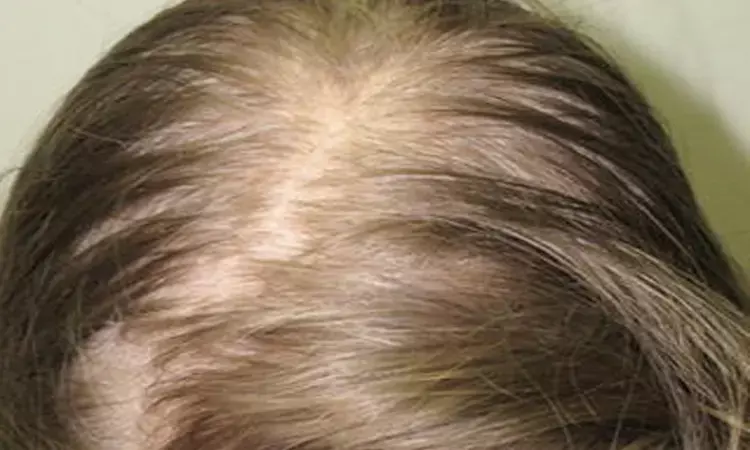- Home
- Medical news & Guidelines
- Anesthesiology
- Cardiology and CTVS
- Critical Care
- Dentistry
- Dermatology
- Diabetes and Endocrinology
- ENT
- Gastroenterology
- Medicine
- Nephrology
- Neurology
- Obstretics-Gynaecology
- Oncology
- Ophthalmology
- Orthopaedics
- Pediatrics-Neonatology
- Psychiatry
- Pulmonology
- Radiology
- Surgery
- Urology
- Laboratory Medicine
- Diet
- Nursing
- Paramedical
- Physiotherapy
- Health news
- Fact Check
- Bone Health Fact Check
- Brain Health Fact Check
- Cancer Related Fact Check
- Child Care Fact Check
- Dental and oral health fact check
- Diabetes and metabolic health fact check
- Diet and Nutrition Fact Check
- Eye and ENT Care Fact Check
- Fitness fact check
- Gut health fact check
- Heart health fact check
- Kidney health fact check
- Medical education fact check
- Men's health fact check
- Respiratory fact check
- Skin and hair care fact check
- Vaccine and Immunization fact check
- Women's health fact check
- AYUSH
- State News
- Andaman and Nicobar Islands
- Andhra Pradesh
- Arunachal Pradesh
- Assam
- Bihar
- Chandigarh
- Chattisgarh
- Dadra and Nagar Haveli
- Daman and Diu
- Delhi
- Goa
- Gujarat
- Haryana
- Himachal Pradesh
- Jammu & Kashmir
- Jharkhand
- Karnataka
- Kerala
- Ladakh
- Lakshadweep
- Madhya Pradesh
- Maharashtra
- Manipur
- Meghalaya
- Mizoram
- Nagaland
- Odisha
- Puducherry
- Punjab
- Rajasthan
- Sikkim
- Tamil Nadu
- Telangana
- Tripura
- Uttar Pradesh
- Uttrakhand
- West Bengal
- Medical Education
- Industry
Scalp neuropathy associated with androgenetic alopecia: JAAD study

Scalp neuropathy associated with androgenetic alopecia: JAAD study- Androgenetic alopecia (AGA) is a common type of alopecia seen predominantly in males. It is a dermatological disorder due to sensitivity to dihydrotestosterone. Another possible contributing factor to AGA is the attachment of the arrector pili muscle (APM), the innervation of which may maintain follicular integrity. Inability to contract the APM might provoke hair loss. Therefore, the authors hypothesized that scalp neuropathy may play a role in AGA and recently published a study on this in the Journal of American Academy of Dermatology.
Scalp sensation n patents of AGA was evaluated on the midfrontal, left, and right frontotemporal recesses, vertex, and occipital regions of 62 men: 30 with Norwood- Hamilton 1 to 2 and 32 with Norwood-Hamilton $3 (clinically significant, AGA group). All participants were healthy with no hair transplants/scars, conditions affecting neural function, or inflammatory scalp conditions. None of the patients were using 5α-reductase inhibitors, minoxidil, or medications/treatments known to affect sensation.
Temperature discrimination testing consisted of exposure to glass vials containing either warm (480C-520C) or cold (130C-170C) water. Pressure sensitivity was tested by Semmes-Weinstein filaments of 0.07, 0.4, 2, and 4 g. Two point discrimination testing was done by applying discs with fixed 2- to 25-mm 2-point intervals. The optimal criterions (by receiver operator characteristic analysis) for pressure threshold and 3-point threshold were determined to be 0.4 g and 20 mm respectively.
Fisher's exact test was used to evaluate the association of AGA with scalp neuropathy. The data were analyzed for men older than 35 years to minimize confounding from age. Forty-two men were included; median age of the AGA group (n= 27) was 69 (interquartile range [IQR], 16) and the non-AGA group (n= 15) was 60 years (IQR, 15). Neuropathy at the vertex of the scalp (>0.4 g sensitivity) was significantly associated with AGA (P= 0.025). Forty-eight percent of men with AGA displayed neuropathy at the vertex compared with 13% of men without AGA. Neuropathy at the scalp vertex (>20 mm 2-point discrimination distance) was significantly associated with AGA (P= 0.002). Sixty-three percent of men with AGA displayed vertex neuropathy compared with 13% of men without AGA. Temporal neuropathy (>20 mm 2-point discrimination distance) was also associated with AGA. Sixty-three percent of men with AGA displayed neuropathy at the right frontotemporal recess compared with 20% of men without AGA (P= 0.008). Fifty-nine percent of men with AGA displayed neuropathy at the left frontotemporal recess compared with 20% of men without AGA (P= 0.015). No significant association was found between AGA and temperature discrimination. No differences were detected on the midfrontal or occipital scalp.
This is the 1st to find an association between scalp neuropathy and AGA. Scalp neuropathy might manifest as autonomic neuropathy and peripheral neuropathy, as autonomic nervous system controls the APM. The autonomic neuropathy hypothesis is consistent with the fact that disruption of the autonomic nervous system in leprosy triggers localized alopecia. This study shows association rather than cause and effect.
To conclude this study shows that scalp neuropathy could be associated with androgenetic alopecia but not in a cause and effect manner. Studies in a larger cohort ae required to give a robust evidence to support findings of this study.
Source- Cavanagh G, Goren A, Wambier CG. Scalp neuropathy in androgenetic alopecia. J Am Acad Dermatol. 2022 Jan;86(1):183-184. doi: 10.1016/j.jaad.2021.01.034. Epub 2021 Jan 19. PMID: 33476730.
MBBS
Dr Manoj Kumar Nayak has completed his M.B.B.S. from the prestigious institute Bangalore medical college and research institute, Bengaluru. He completed his M.D. Dermatology from AIIMS Rishikesh. He is actively involved in the field of dermatology with special interests in vitiligo, immunobullous disorders, psoriasis and procedural dermatology. His continued interest in academics and recent developments serves as an inspiration to work with medical dialogues.He can be contacted at editorial@medicaldialogues.in.
Dr Kamal Kant Kohli-MBBS, DTCD- a chest specialist with more than 30 years of practice and a flair for writing clinical articles, Dr Kamal Kant Kohli joined Medical Dialogues as a Chief Editor of Medical News. Besides writing articles, as an editor, he proofreads and verifies all the medical content published on Medical Dialogues including those coming from journals, studies,medical conferences,guidelines etc. Email: drkohli@medicaldialogues.in. Contact no. 011-43720751


